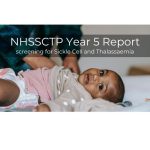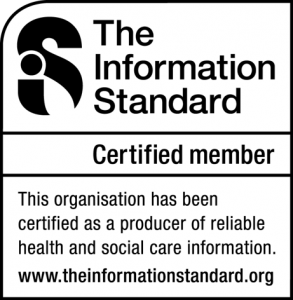A Guide for Parents, Guardians, Families and others giving Day to Day care to people with SCD
This page is intended to give you the information you need to understand how to help someone who has a Sickle Cell Disorder to live a better life with the condition.
Symptoms and associated problems
As blood circulates to all parts the body, sickling can occur anywhere resulting in a range of complications. Symptoms usually start after the age of four to six months and can include all or some of the following:-
Pain
Because of the sickle cell shaped blood cells, they sometimes get stuck in the small veins and prevent normal blood flow. These blockages cause pain in the arms, legs, back and stomach. Sometimes this pain is quite severe. Sickle cell disorders can also cause swelling of the hands and feet, with stiff painful joints and extreme tiredness. Episodes of severe pain are known as “crises”. Sickle pain can happen at home and at school – in fact anywhere – so it is important for families and sufferers, as well as carers and teachers, to know the best ways of coping.
How severe will the effects be?
The problems of sickle cell disorder are very variable – some people are mildly affected and largely free from pain, while others have frequent and severe pains; most children go through good and bad patches. Doctors cannot predict who will be severely affected.
How much pain is usually experienced, and what kind is it?
Although everyone is different, pain is a common event in all children, whether or not they have sickle – on average some degree of pain is experienced on at least a quarter of all days. But, in children with sickle cell, pain
- happens more often (on an average of one third of all days);
- lasts longer (generally all day, even if not continuously all day);
- is associated with great tiredness about half the time;
- causes them to spend significant time in bed – on average the time spent wholly or partly in bed adds up to about a week of every school term.
Which parts of the body are painful?
Most commonly, children and adolescents report sickle pain in hands, arms, legs and lower back, with pain in the joints being less usual. Headaches and pains in the chest and abdomen (tummy aches) are as frequent in non-sickle as in sickle children.
Boys may get priapism, which is a painful, stiff penis, often noticed as pain in the groin. They may be too embarrassed to mention this, but it is important to get medical attention because severe sickling is in the penis can lead to impotence (poor erection of the penis).
When do children with sickle cell disorder suffer pain?
Infections, thirst and dehydration caused by not drinking enough even if thirst is not felt, over-exertion, over-excitement, cold weather and cold drinks and swimming have all been reported by sickle children to cause (trigger) pain. Bangs, bumps, bruises and strains (trauma, in technical language) have also been reported to do so. Stress triggers pain in adults, but does not seem to do so in children.
Can you tell if pain is coming?
Children and families can often tell when a severe sickle pain is coming on by thirst, or the eyes turning yellow (jaundice), or by the sufferer being more irritable or tired than usual. These features may not be present, but one or more may predict crisis.
Living with the Pain
There are no easily detectable signs of sickle pain, so children known to have sickle cell disorder who say they are in pain must be trusted; if they can rely on the adults around them to take them seriously, they are less likely to take advantage of their condition to seek attention or avoid distasteful tasks.
Each person should find out what the limitations are that sickle imposes on their life, and what triggers pain for them. The causes differ from person to person, and it is important to be your own detective about your body, or your child’s. Every time a pain is felt ask yourself what may have caused it; it is not always obvious, but if enough detective work is done over a long enough period, you can often make the link. For instance, one parent noticed his child was especially likely to be affected if she drank a very cold drink from the fridge, so her drinks are not kept in the fridge now and she is helped to avoid pain.
Infections
Someone with sickle cell disorders is at risk of developing severe infections, and is strongly advised to take penicillin twice a day every day.
Penicillin is taken as a prophylactic, that is to prevent a particular infection. Everyone is liable to catch infections, and taking penicillin does not reduce the general risk, but it does mean that the body can generally resist dangerous pneumococcal infections that everyone is prone to, and gives time for medical attention to be sought before the condition becomes critical.Taking penicillin will not treat pain, and forgetting to take a dose does not give rise to pain, but it is important in the management of sickle cell disorder.
Anaemia
Children with sickle cell disorder tend to be anaemic. Most of the time they feel quite well, but if the anaemia gets worse they may feel tired and unwell. Folic acid is a vitamin, found in fruit and vegetables, which everyone needs to help make blood. People with sickle cell disorder especially need it to prevent them becoming run down.
Jaundice
People with sickle cell anaemia frequently have a mild jaundice (yellowing in the whites of the eyes). This is not a cause for concern unless it becomes noticeably worse.
What to do if Someone has a Sickle Cell Crisis
Someone having a crisis will suddenly become unwell or complain of severe abdominal or chest pain, headache, stiffness of the neck or drowsiness.
Someone having a Sickle Cell Crisis needs urgent hospital treatment.
Practical Help
There are several practical steps you should take to help reduce the frequency and severity of sickle cell crises.
Make sure the Child does not become dehydrated.
This means encourage them to drink much more than normal and more often. The child will to go to the toilet more often than usual because of this extra fluid intake. This problem may also cause bed-wetting until the child reaches his or her teens. Never restrict the amount the child drinks because of this. Discuss the problem with the child’s doctor, social worker or a sickle cell counsellor.
Pain can be eased by simple measures
Warmth, (probably by increasing the blood flow), by massaging and rubbing and by heat from hot water bottles and deep heat creams.
Bandaging to support the painful region.
Resting the body.
Getting the sufferer to relax, by deep breathing exercises and distracting the attention, and by other psychological methods.
Pain can be also be relieved by pain-killing medicines (analgesics), which can be used at home.
- The gentlest analgesic to try is paracetamol, given three times a day (62.5 mgm under 12 months, 125 mgm 1-4 years, 250 mgm 4-10 years, 500 mgm 10-14 years, and 1 gm 15 years upwards).
- The next gentlest is codeine phosphate, given four times a day, at 1-2 mgm for every kilogram of body weight of the sufferer.
- A stronger analgesic is a non-steroidal anti-inflammatory agent, such as Diclofenac, which is given three times a day, at a dose of 1 mgm for every kilogram of body weight of the sufferer.
- If these are not effective, then admission to hospital of pain-killing treatment with morphine should be arranged.
Make sure the child is always warm and dry.
The condition may get worse in the cold and wet. Warm clothing should be worn in cold weather, sudden changes of temperature must be avoided. Cross country running and strenuous outdoor activities should be avoided in cold or wet weather.
A child with sickle cell disorder should only swim if the water is warm and care is taken to keep warm when leaving the water. If the Child develops a crisis despite these precautions he or she should avoid swimming all together.
However you should encourage the child to join in with as much exercise as possible.
Make sure the child does not become over tired.
Encourage him or her to rest whenever he or she feels tired.
Make sure the child is fully immunised against infectious illnesses.
Ensure that he or she also takes any vitamins (folic acid) and antibiotics (penicillin) prescribed by the Doctor.
Make sure the child visits the GP and hospital clinic regularly.
There will be a blood test and physical examination, and the opportunity to ask questions and to discuss the condition. Remember to ensure the child takes any prescribed medication at the right time and dosage, and hospital / clinic appointments are always kept.
Make sure the child is adequately prepared for travel.
If he or she is going on a planned journey ask for advice on precautions to take before or during the flight – for instance: increased fluids, pain killers or oxygen may be recommended (airline cabin staff must be aware of the special needs). This must be brought to the attention of the Airline as early as possible prior to departure, so they can make suitable arrangements). More information is available on our travel page.
Ensure anti – malaria protection is given when visiting countries in the malarial zone.
Allow plenty of time to obtain a prescription.
Support the Child.
Like any other chronic illness sickle cell disorder is sometimes difficult to come to terms with. The child may some times feel unable to cope with the inconvenient and painful effect of the condition.
You can help by being aware of his or her feelings and by making allowances when necessary. When pain stops normal life, and particularly when the child has to go to bed because of it, have a good supply of books, games and videos.
You also need to arrange your family life so someone can care for your child when he or she has to go to bed, or cannot go out, or to school, because of the pain.
Use the support agencies
Social Services, Advice Centres and Sickle Cell Groups can all be contacted for support. As well as receiving help and advice, sharing experiences and meeting others with sickle cell disorder can be beneficial to the carer and the child alike.
Make sure that you, the child and the whole family are well informed about sickle cell disorders.
New doctors and your dentist must be told before any treatment is prescribed.
Remember:
People who only have Sickle Cell Trait do not suffer any of the symptoms of Sickle Cell Anaemia, sickle cell trait is not an illness and people with trait are perfectly healthy. However, they require extra oxygen during anaestheticand operations, and are advised against participating in some sports, such as scuba diving or climbing very high mountains, where the oxygen supply may become reduced.
How you can help with the education of children with sickle cell.
Sickle cell disorders do not affect a person’s intelligence. Children with sickle cell disorders can almost always attend school and participate fully in normal activities.
Talk to the child’s teachers, play group leaders and childminders. If a child has a sickle cell disorder, discuss the condition with the adults he or she spends time with and pass on information leaflets, including the Sickle Cell Society’s leaflet A GUIDE FOR TEACHERS AND OTHERS CARING FOR CHILDREN, to make sure that they understand the condition and how it might affect the child.
The class teacher and the head teacher should know of the diagnosis and understand the limitations sickle can impose on a child – the need for frequent drinks and easy access to lavatories, the triggering of pain by over-exertion or cold. The school should have a quiet place where a child can rest, and simple analgesics, such as paracetamol, should be available. The teacher may need a letter of permission from the child to be sent home with only mild sickle cell pain, and good communication between parents and staff can prevent this happening.
Remember, to do this every time there is a change of teacher. Stress how important it is that everyone who has contact with the child should understand the condition. This includes all teachers and support staff who will need to know the effect of cold and wet weather. Although sickle cell disorder has no effect on the intelligence, the child may find it difficult to concentrate when in pain or may get easily tired and lethargic if badly anaemic.
The child with Sickle Cell disorder may have to miss lessons or take days off school when attending clinics or during a crisis. These interruptions may cause the child to fall behind with school work. If this is the case you can help by ensuring that the teachers understand why he or she is behind and by helping him or her to keep up with lessons.
Ensure that the child always has some work which can be done at home if he or she is away from school for any period at all.
For longer stays away from school, home or hospital tuition may by necessary, and you can help by keeping in touch with the child’s school.
Encourage the child to consider appropriate careers at an early age so that he or she can give particular attention to keeping up with the subjects which will be most relevant.
Try to raise the awareness of sickle cell disorders in the child’s school. Encourage teachers to use the disorder in their teaching – tell them about the Sickle Cell Society leaflet Guidelines for the Inclusion of Sickle Cell Disorder in Teaching as well as the teaching resources page on this web site.
Remember that you can work with doctors and teachers to help the child with a sickle cell disorder to lead a full and normal life.
Where to get further help, advice and information
- School Health Service. i.e. The School Nurse or Medical Officer.
- The Child’s General Practitioner (GP).
- The Child’s Hospital Doctor. i.e. The Paediatrician or Haematologist.
- Local Health Promotion Unit.
- Your Local Sickle Cell Centre or Support Group.
For further information contact:
Sickle Cell Society
54 Station Road
London, NW10 4UA
UK
Tel 020 8961 7795
Fax 020 8961 8346
info@sicklecellsociety.org









